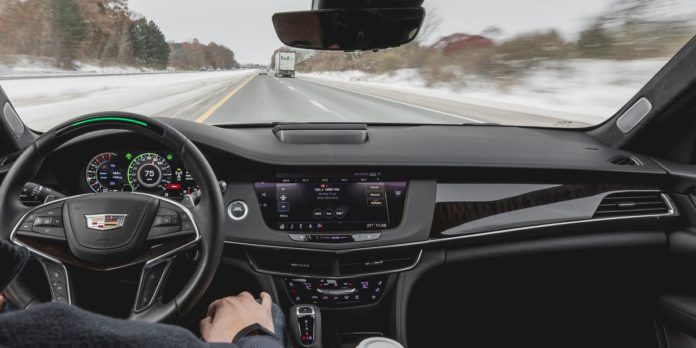- The Insurance Institute for Highway Safety (IIHS) instituted a new rating program that evaluates partially automated driving systems.
- The new test protocol, carried out on closed test tracks and on the street, evaluates features including driver monitoring, attention reminders, and emergency procedures in systems from BMW, Ford, General Motors, Tesla, and others.
- The highest scorer was Lexus Teammate with Advanced Drive, which earned an Acceptable overall rating. Below that were GM’s Super Cruise and Nissan ProPilot Assist with Navi-Link, both rated Marginal. All others got failing scores overall.
The IIHS has released gloomy results for a new evaluation focused on partially autonomous driving systems including General Motors’ Super Cruise and Tesla’s Autopilot. The new testing regimen evaluates driver monitoring, attention reminders, and emergency procedures in each vehicle and issues overall and individual feature ratings.
The IIHS tested 14 systems from nine manufacturers: BMW, Ford, General Motors, Genesis, Lexus, Mercedes-Benz, Nissan, Tesla, and Volvo. The scoring system follows the same breakdown as the IIHS crash safety ratings and is broken down into four categories. The Good rating is the best available, followed by Acceptable, Marginal, and Poor.
None of the systems tested earned the top Good rating overall, while only the Lexus Teammate with Advanced Drive system earned an Acceptable score. Both GM’s Super Cruise and the Nissan ProPilot Assist with Navi-Link achieved a Marginal score, while the other 11 systems all received a Poor rating.
The Lexus system was tested on an LS, with the Super Cruise test being carried out on a GMC Sierra and the ProPilot test on a Nissan Ariya. According to the IIHS, the ratings only apply to each specific model tested despite the same systems being offered on multiple vehicles from the same manufacturer.
Among other tests, the organization took steps to obscure the driver’s face, block the driver-monitoring camera, and remove the driver’s hands from the steering wheel. They also had the driver hold a foam block the size and shape of a smartphone, in cases where the system permitted hands-free driving. Then they evaluated whether the safety features activated under these circumstances and if so, whether they issued an alert. According to the IIHS report, none of the 14 semi-autonomous systems met the requirement “though the Ford systems come very close.” Ford’s BlueCruise and Adaptive Cruise Control with Stop & Go and Lane Centering Assist were tested on the Mustang Mach-E.
“Little Evidence it Makes Driving Safer”
Most of the evaluated systems “don’t include adequate measures to prevent misuse and keep drivers from losing focus on what’s happening on the road,” commented IIHS president David Harkey. “Some drivers may feel that partial automation makes long drives easier, but there is little evidence it makes driving safer,” Harkey continued. “As many high-profile crashes have illustrated, it can introduce new risks when systems lack the appropriate safeguards.”
Based on the results, many of the systems struggle to meet the IIHS specifications for driver monitoring, attention reminders, and emergency procedures. Systems involving automated lane changes and cooperative steering generally scored higher across the board.
According to Harkey, the sporadic results can actually be viewed as a good thing. “But there’s a silver lining if you look at the performance of the group as a whole. No single system did well across the board, but in each category, at least one system performed well.” That means improvements could come quickly for each system, and in some cases might only require over-the-air software updates.
Jack Fitzgerald’s love for cars stems from his as yet unshakable addiction to Formula 1.
After a brief stint as a detailer for a local dealership group in college, he knew he needed a more permanent way to drive all the new cars he couldn’t afford and decided to pursue a career in auto writing. By hounding his college professors at the University of Wisconsin-Milwaukee, he was able to travel Wisconsin seeking out stories in the auto world before landing his dream job at Car and Driver. His new goal is to delay the inevitable demise of his 2010 Volkswagen Golf.

